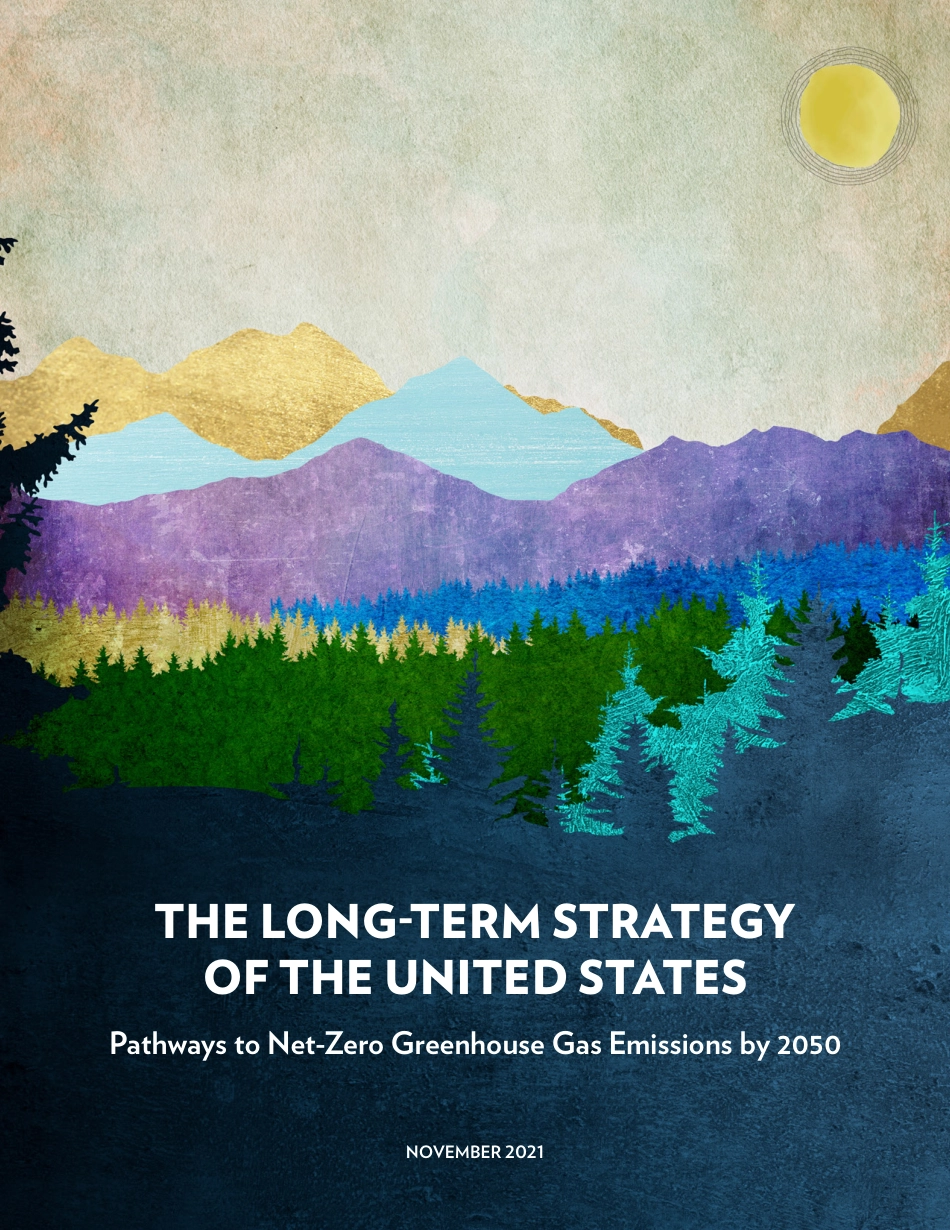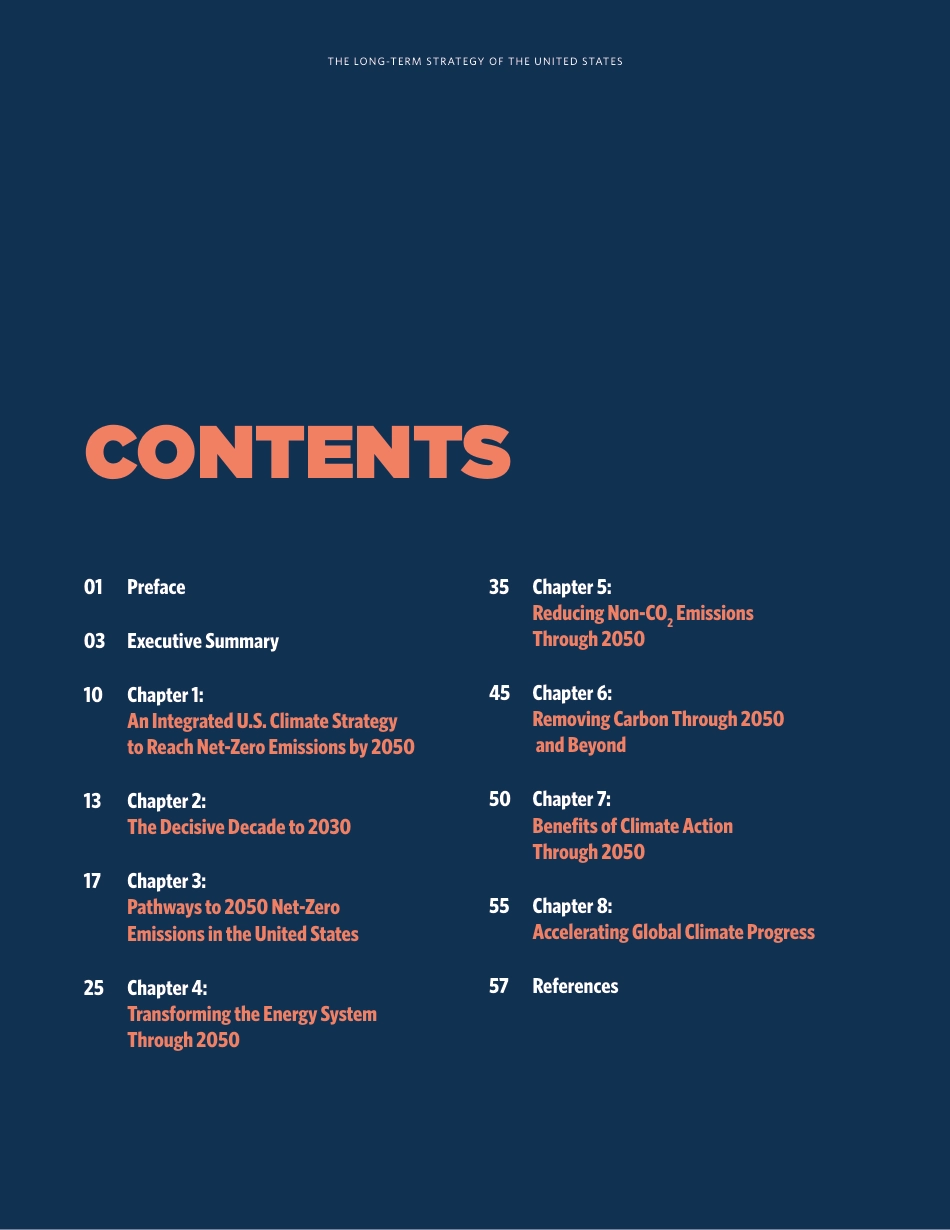THE LONG-TERM STRATEGY OF THE UNITED STATESPathways to Net-Zero Greenhouse Gas Emissions by 2050NOVEMBER 2021The Long-Term Strategy of the United States: Pathways to Net-Zero Greenhouse Gas Emissions by 2050. Published by the United States Department of State and the United States Executive Office of the President, Washington DC. November 2021.CONTENTS01 Preface03 Executive Summary10 Chapter 1: An Integrated U.S. Climate Strategy to Reach Net-Zero Emissions by 205013 Chapter 2: The Decisive Decade to 2030 17 Chapter 3: Pathways to 2050 Net-Zero Emissions in the United States25 Chapter 4: Transforming the Energy System Through 205035 Chapter 5: Reducing Non-CO2 Emissions Through 205045 Chapter 6: Removing Carbon Through 2050 and Beyond50 Chapter 7: Benefits of Climate Action Through 205055 Chapter 8: Accelerating Global Climate Progress57 ReferencesTHE LONG-TERM STRATEGY OF THE UNITED STATESIn the United States and around the world, we are already feeling the impacts of a changing climate. Here at home, in 2021 alone we have seen historic droughts and wildfires in the West, unprecedented storms and flooding in the Southeast, and record heatwaves across the country. We see the same devastating evidence around the world in places like the fire-ravaged Amazon, the sweltering urban center of Delhi, and the shrinking coastlines of island nations like Tuvalu. The science is clear: we are headed toward climate disaster unless we achieve net-zero global emissions by midcentury. We also know this crisis presents vast opportunities to build a better economy, create millions of good-paying jobs, clean our waters and air, and ensure all Americans can live healthier, safer, stronger lives. The time is now for decisive a...



